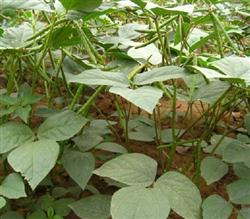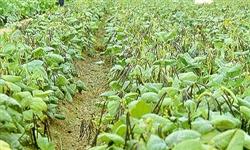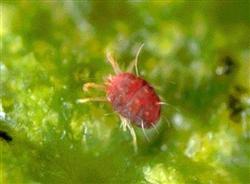High-yield cultivation techniques of mung bean

Mung bean is a high-protein, low-fat, medium starch, medicine and food homologous crop, is an ideal health food for people, and has high economic utilization value. The most remarkable characteristics of mung bean planting are long sowing period, short growth period, drought and barren tolerance, strong adaptability, wide cultivation range, nitrogen fixation ability, good stubble, but avoid continuous cropping. The specific planting and cultivation techniques are as follows: select suitable varieties and scientifically determine the sowing date: first, careful seed selection must select mung bean varieties with early maturity, upright, high yield and one-time maturity, such as new varieties Jilu 7 and Jilu 8. The old variety Jilu 2 is fine. Second, timely sowing mung bean sowing date test concluded that the best sowing time for spring sowing mung bean should be in late April, this period can be sown with cotton (18645, 75.00,0.40%), cotton can be planted in large and small rows, 90cm 100cm in large rows and 50cm in small rows, which can improve the light and air permeability of cotton and is beneficial to photosynthesis. After sowing cotton, sow a row of mung beans in the cotton row, the distance between mung bean plants is about 15 cm, and there are 1 to 2 plants in each hole. Too thin and too dense will affect the yield of mung beans. Timely harvest 80% of the mung bean pods are harvested when mature, drying, threshing and cleaning in time after harvest, when the grain water content is less than 14%, it can be stored in storage and fumigated with aluminum phosphide to prevent the harm of bean curd. The main results are as follows: 1. Interplanting mung bean is not sensitive to light and is more resistant to shade. Taking advantage of the characteristics of short plant and nodule nitrogen fixation and fertilizer increase, it is often intercropped with tall stalk crops, fertilizing and ventilating with light, which is beneficial to increase the yield of main crops and double cropping in one place, so as to achieve the purpose of increasing income and raising land. There are two modes of intercropping. (a) mung beans, millet (sorghum), 2 rows of corn (2349, 8.00,0.34%), 4 rows of mung beans or 2 rows of corn (sorghum), 2 rows of mung beans or 4 rows of corn, 2 rows of mung beans. Give priority to corn, increase the income of mung beans; give priority to mung beans, increase the income of corn. (B) mung beans, millet, commonly known as "millet riding donkey (green)", 1 millet, 4 rows of mung beans. Both mung beans and millet should increase production by 10%. 2, interplanting (a) mung bean with sweet potato. Planting sweet potato on the ridge, hole sowing or strip sowing 1 row of mung beans in the ditch can harvest 40-50 kg more mung beans per mu and a lot of sweet potatoes. (B) Cotton with mung beans. Wide row 1.2 meters to grow mung beans, narrow row 0.5 meters to grow cotton. Cotton and green were sown at the same time, and mung beans were harvested in the cotton boll period. 3. Intercropping generally sows or covers mung beans between rows or plants of corn and sorghum. It is usually used to fill the gap of main crops such as corn, so as to reduce the yield of main crops with lack of seedlings. And mung bean can raise land in barren land to achieve the purpose of increasing income. 4. Multiple cropping and multiple cropping is mainly in multi-cropping areas, using wheat or other next crops to plant mung beans, implement more harvest in one place, and improve land utilization rate. There are wheat, mung bean, rice, mung bean, rape, mung bean and other planting methods. 5. Purebred mung beans are planted once a year, which are mostly planted in thin sandy land, hilly land or sloping land with short frost-free period and barren land, especially in arid areas with dry climate and thin soil layer. as well as the areas with sparse population, short growth period and extensive management, carry out pure mung bean breeding and obtain a certain yield.
- Prev

Cultivation techniques of mung bean
(1) although mung bean rhizobium has the ability of nitrogen fixation, the application of farm manure and phosphorus and potassium fertilizer can obviously increase the yield. The application of farm manure can be given to people once before sowing, and ploughed and turned over after application. If it is too late to apply base fertilizer, it is necessary to apply a certain amount of nitrogen and phosphate fertilizer in the early stage of growth, that is, branching and flowering.
- Next

Control methods of red spider in mung bean pest
Give priority to chemical control. Strengthen the field inspection, found that the local spot occurred, timely administration of medicine and control. Use 50% malathion EC 1000 times, or 50% dibromophos 2000 times, or 25% deltamethrin 5000 times. Once every 7 days, 2 to 3 times in a row.
Related
- The first cup of black tea in spring, the flavor and history of tea gardens in Kenya, Africa
- The computer can not only choose potatoes, but also grow tea rice. AI will grow winter oolong tea champion.
- It is not only the inflated tea bitten by insects, but also engraved with the four seasons tea in Beipu.
- The Oriental Beauty Tea Festival in Zhuxian County takes the stage at the weekend to experience the plus-size feast of oil tea.
- & quot; Oriental Beauty Tea & Exploration of Emei in Hsinchu, the hometown of quot;
- The new variety of strawberry "Tainong 1" dessert is the first choice with mellow aroma. Crimson gorgeous
- History of Tea in Taiwan: from Wild Inner Mountain to Export Tea Garden
- Two types of Taiwan Oriental Beauty Black Tea won the British three-Star Award for Childhood Tea Xiang Zhang Jiaqi changed from pilot to champion tea maker.
- Banana species and varieties: the planting history of Taiwan Xianren banana and dwarf banana is long, is banana disease resistant?
- Coffee planting Technology: Qianjie Coffee from Seedling to harvesting

